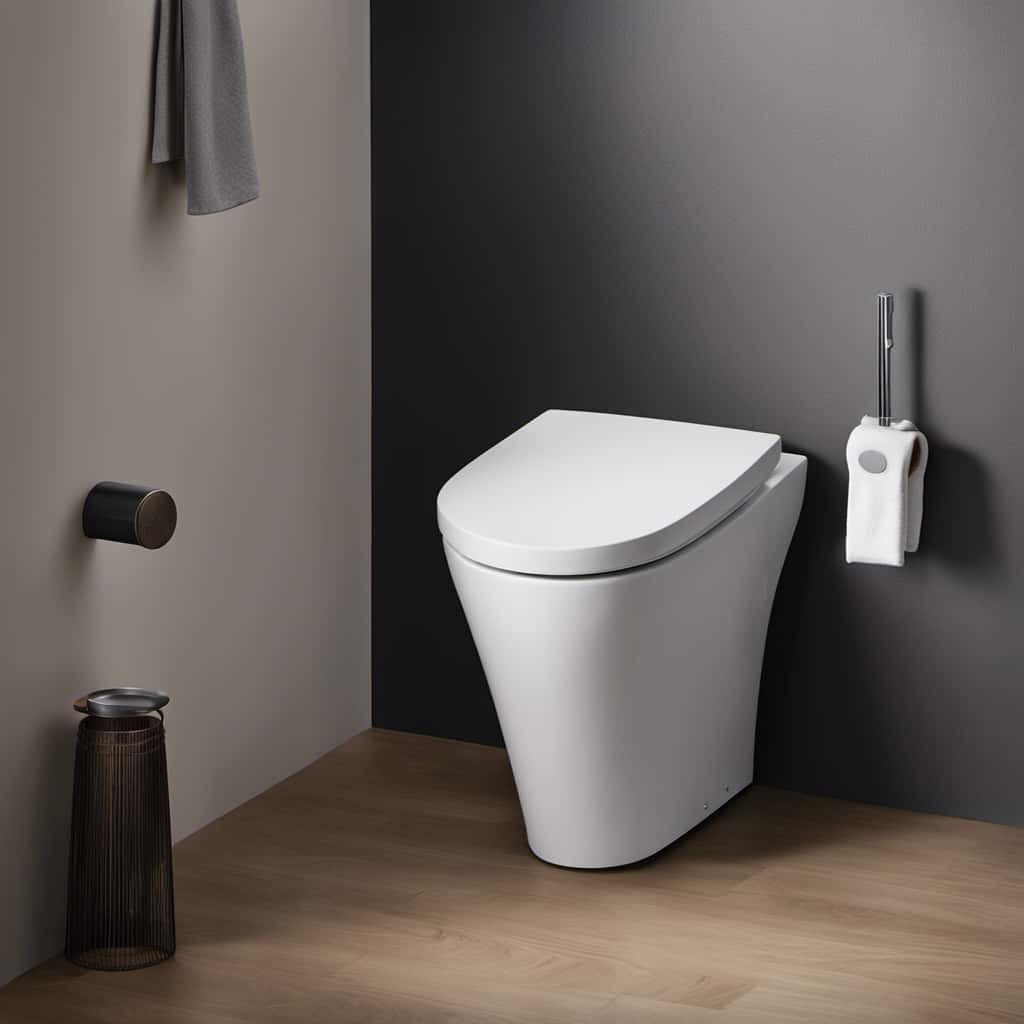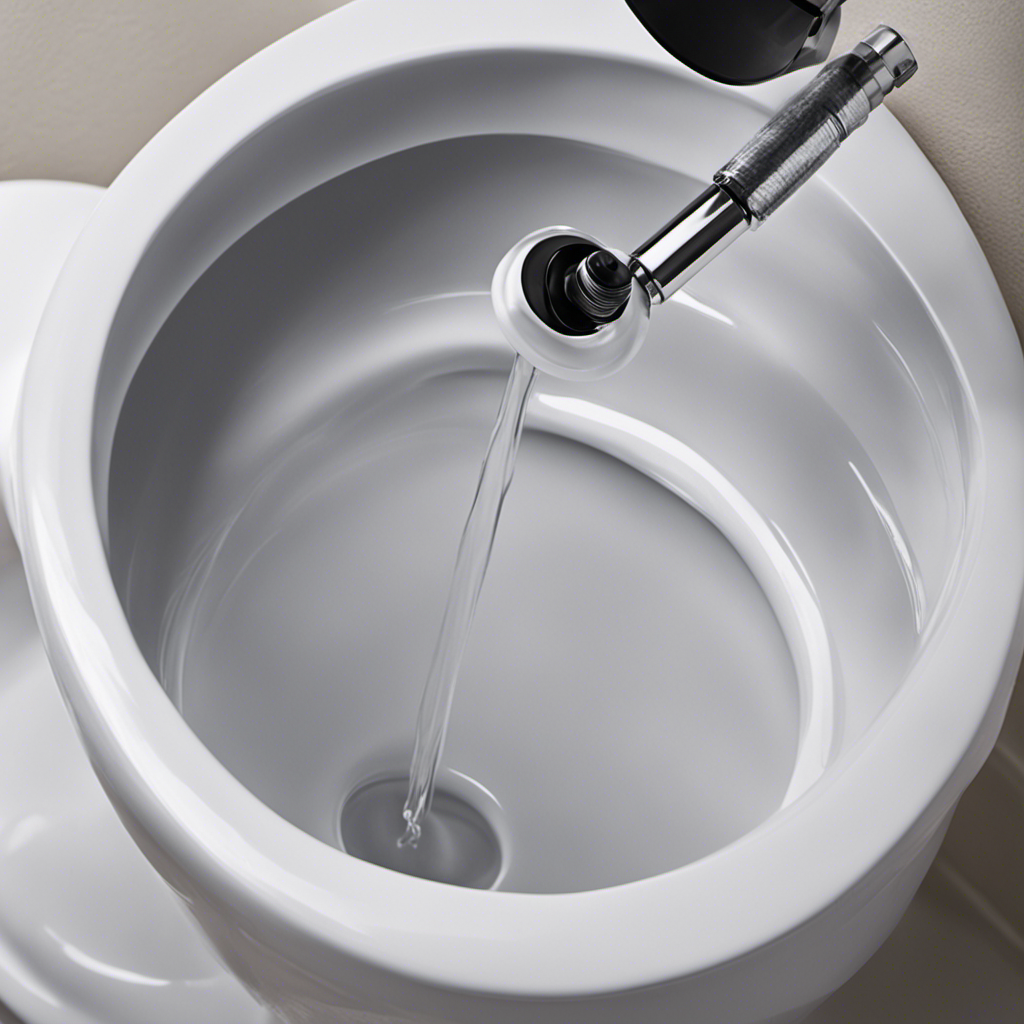Hey there, folks! Ever wondered how a macerator toilet actually works? Well, you’ve come to the right place.
In this article, I’m going to break it down for you in a technical, precise, and detailed manner. We’ll explore the inner workings of a macerator toilet, including its components and the fascinating process of maceration.
So, buckle up and let’s dive into the world of macerator toilets and discover the benefits they bring to the table.
Let’s get started!
Key Takeaways
- Macerator toilets use an electric motor to break down waste and toilet paper into a fine slurry.
- The maceration process breaks down waste and toilet paper into a fine slurry using cutting blades and a macerator pump.
- Macerator toilets require smaller pipes for waste removal, reducing the need for extensive demolition or construction work.
- Regular maintenance and cleaning of the macerator unit are necessary to prevent clogs and ensure optimal performance.
The Macerator Toilet: An Overview
The macerator toilet is a modern plumbing fixture that uses a powerful electric motor to break down waste and toilet paper into a fine slurry. This innovative design offers several advantages over traditional toilets.
Firstly, macerator toilets can be installed in locations where traditional plumbing systems may not be feasible, such as basements or below-ground levels. Additionally, these toilets require smaller pipes for waste removal, reducing the need for extensive demolition or construction work during installation.
Moreover, because the waste is thoroughly pulverized, macerator toilets minimize the risk of clogs and blockages in the plumbing system. The installation requirements for macerator toilets are relatively straightforward. They require a power source for the electric motor, a water supply line, and a discharge pipe for the slurry.
Overall, macerator toilets offer a practical and efficient solution for modern plumbing needs.
Understanding the Maceration Process
Understanding how a macerator toilet functions involves comprehending the process of maceration. The maceration process is a key component of the macerator toilet’s operation, as it breaks down waste and toilet paper into a fine slurry that can be easily pumped away.
Here are two important aspects to consider when it comes to macerator toilet maintenance and troubleshooting:
-
Macerator Toilet Maintenance:
- Regular cleaning and disinfection of the macerator unit to prevent buildup and ensure optimal performance.
- Checking and replacing the macerator blades if they become dull or damaged to maintain efficient maceration.
-
Troubleshooting Macerator Toilet Issues:
- Clearing clogs or blockages in the macerator unit or discharge pipe to restore proper functioning.
- Checking the electrical connections and motor for any issues that may be affecting the macerator’s performance.
Components of a Macerator Toilet
To fully comprehend the components of a macerator toilet, you should familiarize yourself with its inner workings.
A macerator toilet is a type of toilet that uses macerator technology to break down waste before flushing it away. The main components of a macerator toilet include the macerator pump, the cutting blades, and the waste collection chamber.
When you flush the toilet, the macerator pump activates, grinding the waste into smaller particles with the help of the cutting blades. These particles are then forced into the waste collection chamber, where they are stored until the next flush.
The macerator pump ensures that the waste is finely ground and can be easily transported through small pipes. This technology allows for flexibility in the installation of toilets, making it possible to have a toilet even in areas where traditional plumbing is difficult to install.
How the Macerator Pump Works
When you flush, you activate the macerator pump, which grinds the waste into smaller particles. The macerator pump mechanism consists of a motor, impeller blades, and a cutting blade.
Here is a deeper understanding of the macerator pump mechanism:
-
Motor:
-
The motor powers the macerator pump and drives the impeller blades.
-
It is designed to withstand the continuous operation required for efficient waste disposal.
-
Impeller blades:
-
These blades rotate at high speeds, creating a vortex that helps break down the waste into smaller pieces.
-
The centrifugal force produced by the spinning blades forces the waste through the pump and into the plumbing system.
-
Cutting blade:
-
The cutting blade, located at the inlet of the pump, further shreds the waste into even smaller particles.
-
This ensures that the waste can easily flow through the plumbing system without clogging or causing any blockages.
Regular maintenance of the macerator toilet is crucial to keep the pump mechanism functioning effectively. It is recommended to clean the macerator pump and inspect the blades regularly to remove any debris or buildup that may affect its performance.
Benefits of Using a Macerator Toilet
One of the benefits of using a macerator toilet is that it allows me to easily install a bathroom in areas where traditional plumbing may be difficult or costly.
The macerator toilet is equipped with a built-in macerator pump that breaks down waste into a fine slurry before pumping it through small pipes. This means that I can install the toilet in basements, garages, or even on upper floors without the need for major plumbing renovations.
The advantages of using a macerator toilet extend beyond easy installation. The compact design of the macerator toilet also makes it suitable for small spaces, such as RVs or boats.
However, it is important to consider the cons as well. The noise level of the macerator pump can be louder compared to traditional toilets, and regular maintenance is required to prevent clogs and ensure optimal performance.
Frequently Asked Questions
Are Macerator Toilets More Expensive Than Traditional Toilets?
Yes, macerator toilets are generally more expensive than traditional toilets due to the cost of the macerator unit and installation. The added functionality and convenience of a macerator toilet can justify the higher cost for some individuals.
Can a Macerator Toilet Be Installed in Any Bathroom?
Yes, a macerator toilet can be installed in any bathroom as long as there is enough bathroom space and the plumbing requirements are met. It offers flexibility and convenience in terms of placement.
How Often Does a Macerator Toilet Need to Be Serviced or Maintained?
I find that a macerator toilet usually needs to be serviced and maintained every 6-12 months, depending on usage. Regular maintenance includes cleaning the macerator unit, inspecting seals and pipes, and ensuring proper functioning of the system.
Are Macerator Toilets Louder Than Traditional Toilets?
Macerator toilets tend to be louder than traditional toilets due to the grinding mechanism that breaks down waste. The noise level can vary depending on the specific model, but it is generally higher than regular toilets.
Can a Macerator Toilet Handle Large Amounts of Toilet Paper or Waste?
Yes, a macerator toilet can handle large amounts of toilet paper and waste. Its efficient macerating system breaks down the waste into smaller particles, making it compatible with different types of waste.
Conclusion
In conclusion, the macerator toilet is a revolutionary innovation in the world of bathroom fixtures. Its unique maceration process, where waste is ground into a fine slurry, ensures efficient and effective disposal.
The macerator pump, a key component, operates quietly and smoothly, making it a perfect choice for any residential or commercial setting.
The benefits of using a macerator toilet are countless, from its space-saving design to its ability to handle even the toughest waste. It truly is a game-changer in the realm of toilets.
So why settle for anything less when you can experience the power and convenience of a macerator toilet?










